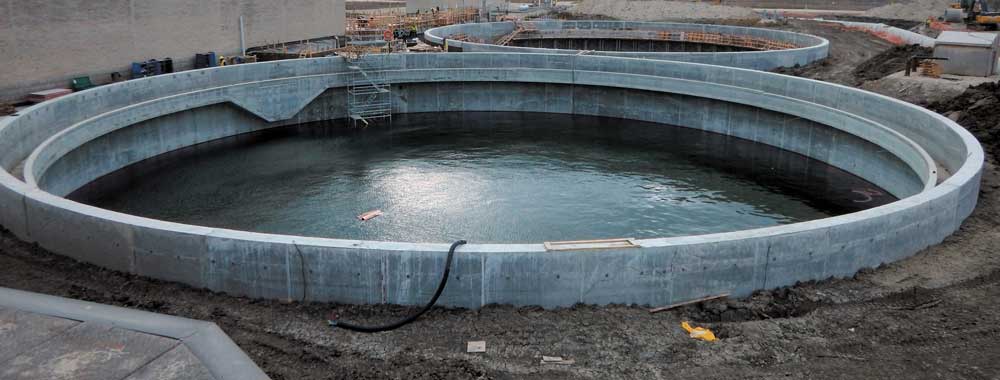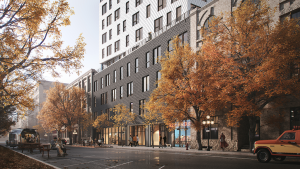The South End Water Pollution Control Centre — one of the city of Winnipeg’s three sewage treatment plants — is a busy site these days as builders work on the $180 million fourth (final) phase of a $335.6 million upgrade.
The plant, which was constructed in 1974, is under expansion largely because it is reaching its capacity to service the south end’s population which is projected to grow from the current service area population of 190,000 residents to 270,000 residents by 2031.
The plant’s improvement program is also being done to meet a new provincial licence for the treatment of such nutrients as nitrogen and phosphorous, says Jackie Veilleux, the project’s director for the city of Winnipeg.
Among the key features to the plant is a high rate clarifier to treat wet-weather flow in spring plus the installation of three biological nutrient removal reactors. The reactors use “an integrated fixed film activated sludge process (IFAS)” to remove nutrients from wastewater, says Neil Harrington, a senior project engineer with the city’s water and waste department.
“It is a fairly advanced technology that improves efficiency,” he says, adding IFAS is more cost-effective than other removal processes as it reduces the footprint of the reactors and doesn’t require the use of chemicals to eliminate nutrients such as phosphorous.
“It is a big construction effort to build these tanks (reactors),” Harrington says. General contractor for the final phase is NAC Constructors of Morriston, Ont.
He says to prevent groundwater infiltration into the deep excavations required for the reactors, a series of groundwater depressurization systems (wells) are installed to pump out groundwater during wet weather and spring runoff.
The building team will have to work without disrupting operations of the existing treatment plant. That will be “especially challenging” where new equipment has to be tied into the old plant, Veilleux says, adding in some cases flow into plant will have to be reduced or stopped — “very difficult to do.”
In 2018, NAC Constructors will be constructing several key buildings, including the chemical-electrical and grit screening facilities that will be tied into the existing plant.
“We can only do that during low flow so some of the construction will have to be done during winter periods,” says Harrington, adding that the contractor must meet a number of “critical milestones” through the four-year long project slated for completion in 2021.
He says the fact the plant is “gravity fed” added to the design challenge for consulting engineer CH2M “to keep the flows going at the necessary rate when you start adding on new processes.”
Value engineering was critical in the preliminary design stage to ensure the project could meet budget. “We build our plans based on life cycle costs and sometimes we’ll pay a little extra upfront on the capital if it saves us money in the long term,” says Veilleux.
Mechanical equipment typically has 15 to 20-year life expectancy while large structures are often built to last 40-50 years.
Veilleux says the design was laid out in detail — “identifying critical and difficult processes” and a construction sequencing plan was included — at the tendering stage “so the (winning) contractor knew exactly what they were getting into and they could price it accordingly.”
The project follows three previous phases of improvements that started in 2013. The federal and provincial governments are contributing $59.4 million towards the $335.6 million project.
To meet the province’s licences for biological nutrient treatment, the city’s smaller west end treatment plant was upgraded in 2008. The largest treatment plant in the north end is slated for an upgrade in the coming years and is currently in the preliminary design phase.











Recent Comments
comments for this post are closed